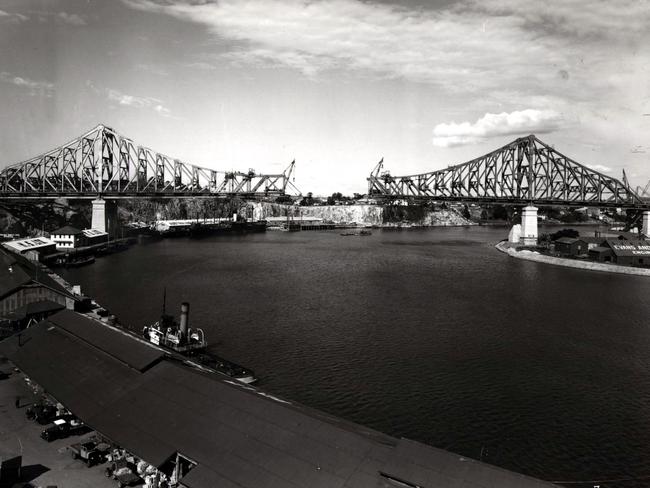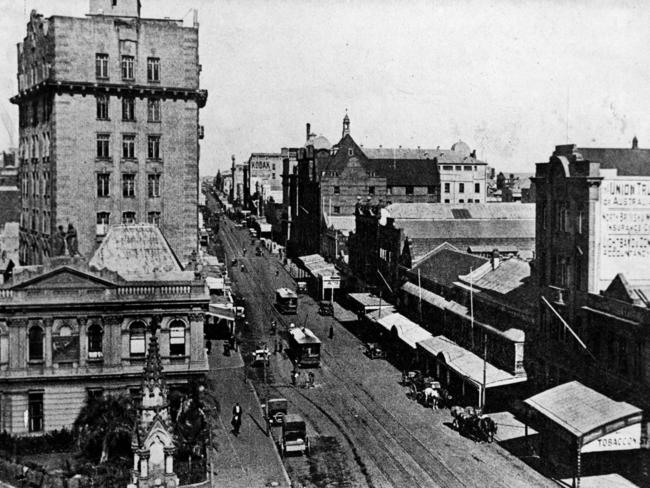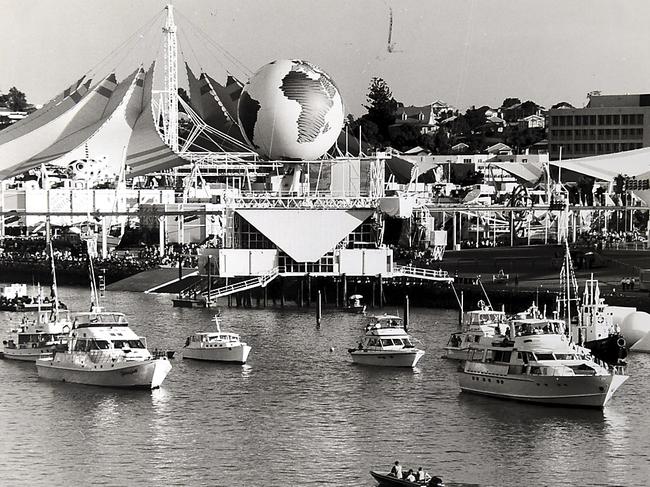Sunday Mail 100th anniversary: Paper has charted Qld’s journey
The Sunday Mail turns 100 this weekend, and a glance at the first edition reveals some strangely familiar topics.

QLD News
Don't miss out on the headlines from QLD News. Followed categories will be added to My News.
It all began one century ago this weekend, and while the world has changed dramatically since the first edition rolled off the presses, a glance at the first edition of The Sunday Mail reveals some topics never go out of fashion.
The premier complains that Queensland is getting a raw deal from Canberra, drink-drivers are a serious problem on our roads, and women are advised to be wary of predatory men.
It all sounds so familiar, yet it was the news of the day a century ago on June 3, 1923, when the first edition of The Sunday Mail was offered to the public at the price of three pence or a “threepenny bit” – a coin which might have then bought you half a loaf of bread.
Since the heady 1920s, when the paper came to life riding a wave of prosperity sweeping the Western world, The Sunday Mail has taken Queenslanders through the Great Depression, World War II, the assassination of John F. Kennedy, the conflict in Vietnam and the 1969 moon landing.
A journey through ageing copies reveals a paper both reflecting and championing the extraordinary growth of a state over the past century. We were by Brisbane’s side for the building of the iconic Story Bridge and the hosting of Expo ’88.
Back in 1923, Queensland families camped out for weekend holidays in the sand hills not far from what is now the Gold Coast’s Cavill Ave, Cairns was still a shanty town, Airlie Beach didn’t even have a name and Lindeman Island was soon to become the first Whitsunday resort to host an overnight guest.

The impact of the Korean War of the 1950s becomes clear in the social pages as extraordinary wealth spreads across the western regions of the state, courtesy of America’s decision to buy large volumes of wool from Queensland graziers to increase its strategic wool stockpiles.
Reports and photos of social events and society weddings in places such as Charleville and Longreach were not uncommon in the 1950s, while developments in agriculture were closely covered. The influence of the Gold Coast becomes apparent as the 1960s loom into view, with the now heritage-listed Kinkabool apartment building appearing on the Surfers Paradise skyline and wowing the state as it soared 10 stories into the heavens.
Sermons from the church pulpit were still considered news, and issues affecting women were popular, including guidance on matters of morality and warnings about predatory men.
One column in the first edition suggests, in diplomatic language, that young women should be wary of becoming too “intoxicated’’ while dancing, warning “bright lights, bewitching music and late hours’’ could all combine to “whet the appetite of dancers and make them wish for further novelty”.
Housing did not appear to be a problem in 1923, with a three-bedroom house in Milton on offer for 750 pounds. If money was a problem, a finance plan with a deposit of about 120 pounds could be arranged.
The first front page also had a good slice of international news, with a report that a landmark air flight from Berlin to London had taken less than seven hours while, in a separate article, the novelist H.G. Wells boldly predicted air travel could become the “transport of the future”.

One of The Sunday Mail’s more legendary editors – who managed to retain the respect and affection of many of his reporters while simultaneously haranguing and browbeating them throughout the 1990s – was Bob Gordon.
It was Gordon (while chief-of-staff at The Courier-Mail) who originally tapped reporter Phil Dickie on the shoulder and dispatched him to check out illegal gambling and brothels in Fortitude Valley, sparking perhaps the biggest Queensland story of the 20th century, which culminated in the corruption-busting Fitzgerald Inquiry.
Gordon still has what might be termed a “deep throat’’ from those years – a man-about-town who provided valuable information about serious criminality but whose name he has always refused to reveal.
As Sunday Mail chief-of-staff and then editor from the mid ’80s into the ’90s, Gordon used the front page to maintain the fight against corruption while putting the paper’s muscle behind big events and laying the foundations for what became the Brisbane Festival’s Riverfire showpiece.
Fighting corruption, then entrenched in the police force, was not without its hazards in the pre-Fitzgerald years, with the police putting a tail on Gordon every night he drove home from the office.
Gordon recalls offering to drop another former Sunday Mail editor Des Houghton, who lived close by, home each night, reasoning that if the police were going to do him a mischief, it would be more difficult to get rid of two bodies than one.
Gordon also remembers putting a picture of Kristy Hinze, granddaughter of Queensland politician Russ Hinze, in the paper, sparking an international modelling career, and chatting with acting premier Bill Gunn about the appointment of Tony Fitzgerald, QC, who unearthed the full extent of political and police corruption.

And he remembers the talents of journalists such as Peter Morley, who headed the political round at the Courier for decades and later worked on The Sunday Mail and was, in Gordon’s opinion, one of the best political reporters in the country. Another was Sylvia da Costa-Roque, who for 40 years eclipsed the traditional role of handling the “women’s pages”, breaking stories as well as becoming one of Australia’s most successful newspaper columnists.
“I loved every day of it,’’ Gordon says.
“We all believed in journalism and we all believed in the important role a newspaper has in society.’’
That role continues to this day. The Sunday Mail in recent months has been at the forefront of the scandals inside our state’s health system, including the closing of regional maternity wards and the appointment of dodgy doctors.
It has also been a prime mover in uncovering the extent of juvenile crime, active in campaigns to address domestic violence and also committed to both making the 2032 Olympic Games a success and leveraging an economic boom out of the event for all Queenslanders.
Editor Anna Caldwell says The Sunday Mail has never wavered from its mission to shine a light in dark corners, inform, entertain and, most importantly, provide a voice for ordinary Queenslanders.
“We are all proud to be here after one century of journalism, still providing a voice for Queenslanders, still speaking truth to power,” she said.




